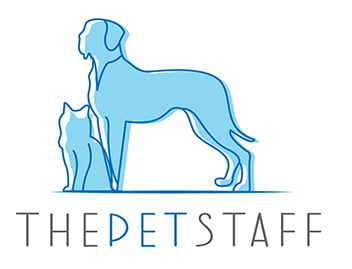The Blue Heeler is known for being one of the most intelligent and energetic herding breeds. Bred by Australian settlers to drive cattle across rough terrain, these working dogs combine endurance, loyalty, and sharp herding instincts. With their striking blue speckled or red coat, they're as handsome as they are hardworking.
But are they the right breed for you? This guide covers everything about the cattle dog—from their high energy needs to their temperament with other dogs and other pets.
Breed Characteristics
Temperament | Alert, loyal, protective |
Intelligence | Very high |
Affection/Friendliness | Loyal, reserved with strangers |
Trainability | Highly trainable |
Mental Stimulation | High – puzzle toys, herding, obedience |
Exercise Needs | High – 1–2 hrs daily running, agility |
Apartment Living | Not suitable |
Family Friendly | Yes, with proper training |
Pet Friendly | Often not with strange pets |
Drooling Level | Low |
Energy Level | high |
Loneliness Tolerance | Low – dislikes being left alone |
Adaptability | Moderate |
Tendency to bark | Moderate |
Origin
The Blue Heeler, also referred to as the Australian Cattle Dog, Australian Heeler, or Queensland Heeler, was bred in the 19th century by Australian settlers seeking a strong and durable herding dog able to withstand the harsh conditions of the outback. Breeders crossed native Dingoes with imported Collies and later added Dalmatian and Kelpie bloodlines to enhance stamina, intelligence, and a strong work ethic. The result was a fearless, agile dog with unmatched herding instincts.
Acknowledged by prominent kennel organizations globally, this dog breed is officially listed with the American Kennel Club (AKC), the United Kennel Club (UKC), and the Australian National Kennel Council (ANKC). Today, the Blue Heeler remains a beloved working dog and loyal companion, admired for its sharp mind and boundless energy.
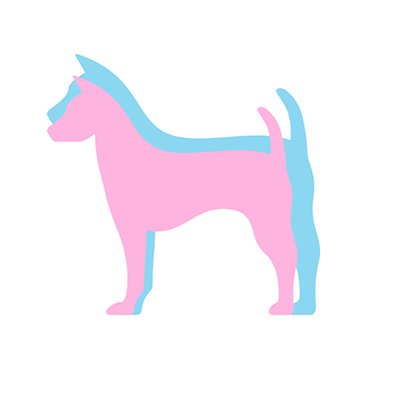
Breed Overview
Height: 18–20"
Weight: 35–50 lbs
Height: 17–19"
Weight: 35–50 lbs
Breed Group
Herding Group
Life Span
12-16 years
Coat
Double, weather-resistant
Coat Length
Short
Hypoallergenic
No
Shedding Level
Moderate
Size
The Australian Cattle Dog (Blue Heeler) is a medium-sized, muscular dog breed built for agility and endurance. Typically, males reach a height of 18–20 inches at the shoulder and weigh between 35–50 pounds, whereas females are a bit smaller, standing at 17–19 inches and weighing 30–45 pounds. Despite their compact size, these active dogs are incredibly strong and athletic, with a sturdy frame designed for hard work. Their balanced proportions allow them to move quickly and efficiently, whether herding livestock or keeping up with an active family. Don’t let their modest height fool you—Blue Heelers are powerhouse companions!
Personality
The Blue Heeler (Australian Cattle Dog) is a fiercely intelligent, high-energy breed with a bold and independent personality. Australian Cattle Dogs love a good challenge, and they thrive on both mental and physical stimulation—without proper exercise, they can become restless or mischievous. While loyal and firmly bonded to their family, they often remain cautious around strangers and may show protective tendencies. Their confidence and alertness make them excellent watchdogs, though their strong herding instincts can lead to nipping or bossy behavior if not redirected.
Though not overly aggressive, they have a low tolerance for boredom and demand an owner who can match their intensity. Consistent training and early socialization are a must to channel their sharp minds and boundless energy positively.
Temperament
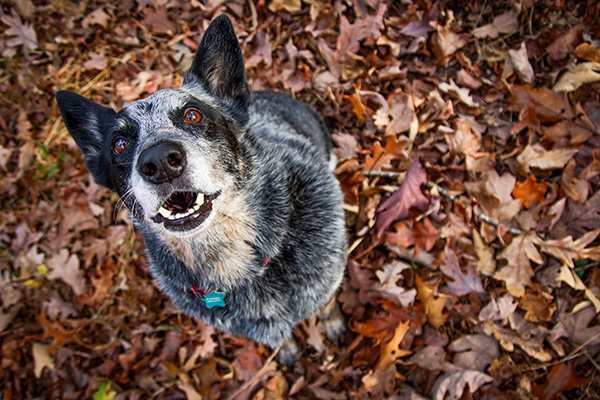
The Blue Heeler (Australian Cattle Dog) has a strong, no-nonsense temperament shaped by its working dog heritage. While intensely loyal and affectionate with their family, these herding dogs can be reserved or cautious around strangers—they’re not the type to greet everyone with a wagging tail. When appropriately socialized from a young age, they tend to be polite, though not necessarily overly friendly, with unfamiliar people.
Blue Heelers can make excellent family pets and get along well with children when given proper training and socialization. Blue Heelers can be patient and protective with older children, especially if raised together. However, their natural herding instincts might cause them to nip at heels during play, so it's advisable to supervise them around young children. Their high energy levels make them thrive in active environments and with well-structured routines.
Their tolerance towards other pets can vary. Some Australian Cattle Dogs get along well with other dogs, particularly if socialized early; however, their dominant nature may spark conflicts with dogs of the same breed or same sex. With cats, their prey drive can be an issue, though some coexist peacefully if appropriately introduced. Small pets like rabbits may trigger their herding instincts, so careful management is necessary.
Diet/ Nutritional needs
The high-energy Blue Heeler thrives on a protein-rich diet (25-30%) to support its muscular build and endurance. Look for quality animal proteins (chicken, beef, fish) as the first ingredient in kibble or consider a raw/balanced homemade diet. Since they’re prone to hip dysplasia, foods with glucosamine and omega-3s help maintain mobility.
Portion control is essential—feed 1.5–2.5 cups of kibble per day, divided into two meals to help prevent bloat. Avoid overfeeding, as Australian Cattle Dogs can gain weight if under-exercised.
Snacks? Opt for lean meats or dog-safe veggies (carrots, green beans) over high-calorie treats. Always provide freshwater—these active dogs dehydrate quickly!
Activity/ Exercise
The Blue Heeler (Australian Cattle Dog) is a high-performance dog breed that demands serious exercise—these aren’t casual stroll-around-the-block dogs. Built to work tirelessly, they thrive on 2+ hours of intense daily activity, combining physical challenges (running, hiking, dog sports) with mental stimulation (puzzle toys, advanced training, or herding tasks). Without proper outlets, their boundless energy morphs into destructive habits like chewing, digging, or obsessive barking.
Structured activities like fetch, frisbee, or obedience training help channel their drive productively. Ideal for runners, hikers, or active families, Blue Heelers excel when given a job—whether it’s herding cattle, mastering tricks, or accompanying adventures.
Pro Tip: A mentally stimulated Australian Cattle Dog is a well-mannered Australian Cattle Dog!
Appearance/ Colors
Blue Heelers, also known as Australian Cattle Dogs, are medium-sized, muscular, and compact working dogs built for endurance and agility. With a robust build, broad chest, and keen expression, their physique reflects their high energy and intelligence. They usually stand 17 to 20 inches tall at the shoulder and weigh between 35 and 50 pounds.
Their most notable characteristic is their short, thick double coat, which is weather-resistant and low-maintenance. True to their name, Blue Heelers are commonly seen in blue or blue-mottled coats, often with black, gray, or tan markings on the face, legs, or chest. Some also have speckled patterns or “masks” over one or both eyes, giving them a unique and rugged look.
While blue is the most recognized color, a red variety is also known as the Red Heeler. These dogs have a similar speckled pattern but in shades of red or ginger. Both color types may be born white and develop their full coloration as they grow.
Grooming needs
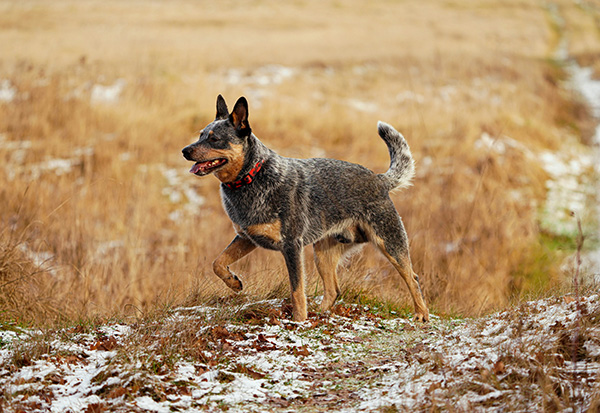
Blue Heelers have minimal grooming requirements but still need regular upkeep. Their short, dense double coat sheds moderately throughout the year and more heavily during seasonal transitions. Brushing once a week helps manage loose hair and keeps the coat healthy by spreading natural oils. During peak shedding times, brushing 2–3 times a week with a slicker brush or de-shedding tool is recommended.
These dogs don’t need frequent baths—every 6 to 8 weeks is enough unless they get dirty. Frequent bathing can remove the natural oils that protect their coat. It's essential to regularly inspect and clean their ears to prevent infections, especially after outdoor activities. Trim their nails every few weeks to prevent overgrowth, which can lead to discomfort or joint problems. Additionally, brushing their teeth a few times a week helps maintain good dental health.
Blue Heelers are active, outdoor-loving dogs, so they often pick up dirt, debris, and ticks. A quick post-walk check helps keep them clean and healthy. New owners should establish a regular grooming routine to ensure it becomes a positive experience. With proper care, your Blue Heeler will stay clean, comfortable, and ready for adventure.
Adaptability
The Blue Heeler (Australian Cattle Dog) adapts well to different environments—from apartments to farms—if their high-energy needs are met. While their tough double coat handles various climates, they struggle in sedentary households and need vigorous daily exercise (2+ hours) to stay balanced. They form intense bonds with their family and dislike being left alone for extended periods, which can lead to destructive behaviors. With proper training, they can thrive in both urban and rural settings, but they are happiest with a job to do. Ideal for active owners who love outdoor activities and thrive on structured routines.
Trainability
The Blue Heeler is highly trainable but strong-willed, combining intelligence with an independent streak. They respond most effectively to positive reinforcement and brief, engaging training sessions. Their working dog heritage means they excel in obedience training, agility, and complex tasks. Consistent training is essential. Without it, their herding instincts may lead to unwanted behaviors like bunny hopping or nipping.
Life expectancy
The sturdy Blue Heeler enjoys an impressive lifespan of 12 to 16 years. It's one of the longest among medium-sized dog breeds. Their hardy genetics contribute to this longevity, though proper care helps ensure they stay active well into their senior years.
Cost
Blue Heelers typically cost between $400 and $1,200 from reputable breeders. Prices can go as high as $2,500 if the dog has champion bloodlines or special training. Adopting a pet from a local animal shelter or rescue may cost $50 to $300.
Potential Health Issues
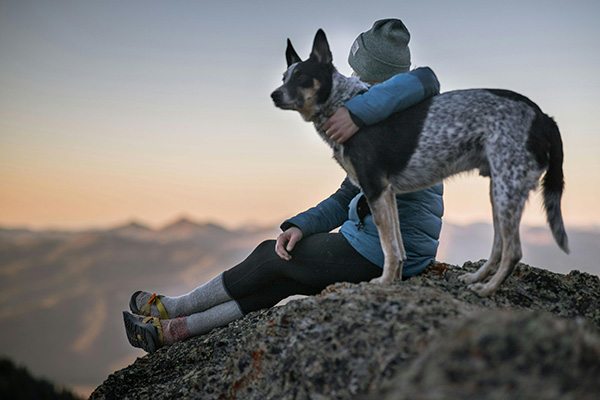
The Blue Heeler (also known as the Australian Cattle Dog) is a tough and energetic breed, but even these hardy dogs can face health problems, especially when not given proper care or bred responsibly. Here are the key issues to know:
Hip & Elbow Dysplasia
This genetic joint condition can cause pain and arthritis. Since Cattle Dogs are active herding dogs, healthy joints are essential. Reputable breeders test for dysplasia, so always ask for health clearances. Maintaining your dog's proper weight helps prevent joint stress.
Progressive Retinal Atrophy (PRA)
PRA is a genetic eye disorder that causes vision loss over time, eventually leading to blindness. While not painful, it affects the dog's vision over time—responsible breeders DNA test for PRA. Watch for signs like night blindness or clumsiness in dim light. Blind dogs can adapt well with proper care.
Deafness
Certain Blue Heelers, particularly those with predominantly white coats, can be born deaf. BAER testing checks puppies' hearing. Deaf dogs can live full lives with training adjustments like hand signals. Avoid breeding dogs with hereditary deafness.
Luxating Patella
This condition causes the kneecap to slip out of place, sometimes making the dog hop like a bunny. Mild cases might not need treatment, while more severe instances could require surgical intervention. Keeping your dog lean helps prevent joint problems.
Dental Disease
Like many breeds, Cattle Dogs can develop plaque and gum disease. To prevent this, maintain their oral hygiene by brushing their teeth regularly and offering dental chews. Proper dental care helps prevent discomfort and more serious health problems.
